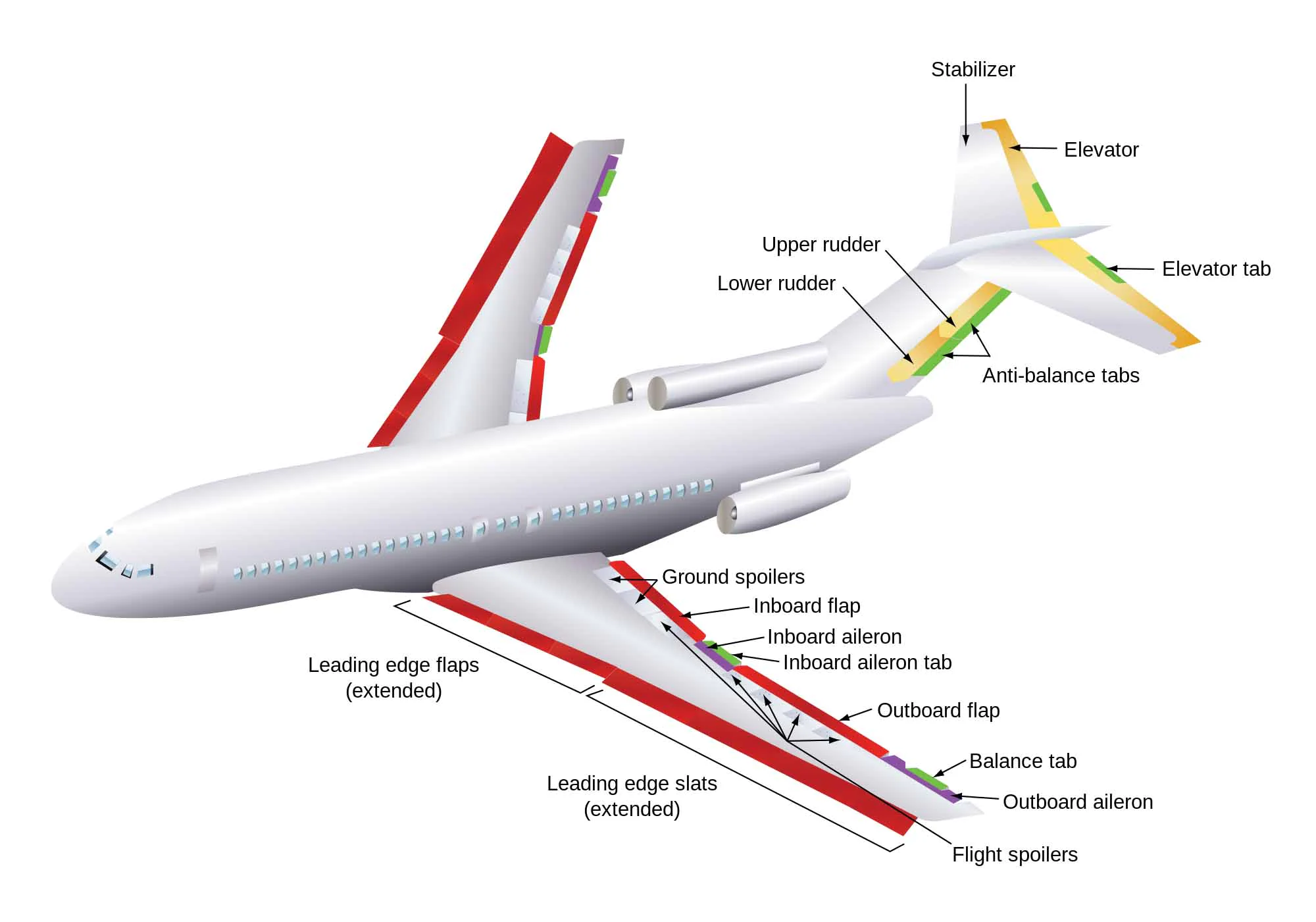High-Lift Devices and Other Flight Controls

I wrote a blog on how airplanes fly and basic flight controls recently and decided to expand on it and discuss high-lift devices and other flight controls. These devices are commonly seen on private jets and large transport aircraft. These are used to generate additional lift at slower speeds and create drag. This is called induced drag and is a byproduct of the generation of lift. These devices allow aircraft to safely slow down while approaching to land and for other inflight scenarios. I will keep this article as basic as possible.
I’ll begin with flaps. Flaps are common on all aircraft and are the large panels seen on the inboard trailing edge of the wing. These panels will extend rearward and down as the aircraft slows as commanded by the flight crew. As they extend, they will lock into various positions and the downward angle will increase as the aircraft continues to reduce airspeed. Conversely, on takeoff, they are typically adjusted to a specific setting for the conditions and retracted as the aircraft accelerates after becoming airborne. They become fully retracted after reaching climb speed and will remain in that position until the process for landing begins (under normal operations).
Slats are similar to flaps in that they move outward and downward but are found along the leading edge of the wing on large private aircraft and transport aircraft. They can be automatic or manipulated by flight crew inputs. They add additional lift at slower speeds and are typically used in conjunction with flaps (they may be used independently and remain retracted on some aircraft) to aid in producing additional lift at slower airspeeds. Again, you will typically (but not always) see these deployed prior to flight and during the approach and landing phase. They will be retracted after takeoff as the airplane accelerates to climb speed and remain that way until landing (during normal operations).
Spoilers are panels seen on top of the wing midway between the leading and trailing edges that tilt upward. They “spoil” lift by disrupting airflow over the wing and in the process, add drag. These are used to aid in descents and are usually only partially extended during this period. Upon landing, they will usually be set to fully deploy once the aircraft is on the ground. This aids in keeping the airplane firmly planted on the runway after landing and aids in braking.
Finally, I’ll talk about a couple of combinations with these devices and controls. Flaperons are large panels on the trailing edge of the wing and can perform the functions of flaps and ailerons. These are typically used at slower speeds and locked in place as the aircraft accelerates. Spoilerons are spoilers that partially deploy in conjunction with aileron usage at slower speeds and can be used asymmetrically. These may be used at slower speeds as well when aileron forces may be inadequate.